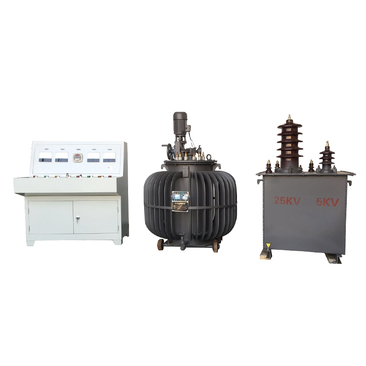uv irradiation cross-linked equipment manufacturer
The Role of UV Irradiation in Cross-Linked Equipment Manufacturing
In recent years, there has been a significant shift towards the utilization of ultraviolet (UV) irradiation in various manufacturing processes, particularly in the production of cross-linked equipment. This innovative approach leverages the unique properties of UV light to enhance the physical characteristics and performance of materials, making it an essential technology for manufacturers aiming to stay competitive in an ever-evolving market.
What is Cross-Linking?
Cross-linking refers to the process of chemically joining two or more polymer chains through covalent bonds. This creates a network structure that can significantly improve the material's mechanical properties, thermal resistance, and chemical durability. Commonly used in applications such as adhesives, coatings, and sealants, cross-linked materials exhibit superior performance compared to their non-cross-linked counterparts.
The Mechanism of UV Irradiation
UV irradiation works by exposing materials to UV light, which initiates photochemical reactions that lead to cross-linking. When a polymer is exposed to UV light, it absorbs the energy, resulting in the formation of reactive species, such as free radicals. These free radicals can then react with other polymer chains, leading to cross-linking and forming a three-dimensional network. This process can occur rapidly, often within seconds, making it a highly efficient method for curing materials.
Advantages of UV-Cured Cross-Linking
1. Speed of Curing One of the most significant advantages of UV irradiation in cross-linking is the rapid curing times. Traditional curing methods, such as thermal curing, can take hours or even days, whereas UV curing can achieve full cross-linking in mere seconds. This speed not only enhances productivity but also allows manufacturers to reduce production cycle times significantly.
2. Energy Efficiency UV curing requires less energy compared to conventional methods, which often rely on high heat for extended periods. The reduced energy consumption is not only cost-effective but also aligns with the growing emphasis on sustainability in manufacturing processes.
3. Improved Material Properties UV-cured cross-linked materials often exhibit better mechanical strength, flexibility, and resistance to chemicals and heat. This makes them ideal for applications in aggressive environments or where durability is paramount.
uv irradiation cross-linked equipment manufacturer

4. Reduced Emissions and VOCs Traditional curing processes can release volatile organic compounds (VOCs) that are harmful to the environment and human health. In contrast, UV curing systems typically produce little to no emissions, making them a more environmentally friendly choice for manufacturers.
Applications in Various Industries
The benefits of UV irradiation cross-linked equipment are seen across multiple industries. In the automotive sector, for instance, UV-cured coatings are used for durability and aesthetic purposes. In electronics, UV-cured adhesives are vital for assembling components that require precise bonding and resistance to thermal stress. The medical industry also utilizes UV-cured materials for manufacturing devices that require high sterility and safety levels.
Challenges and Considerations
Despite its numerous advantages, the implementation of UV irradiation in cross-linking processes is not without challenges. One of the main concerns is the initial investment in UV curing equipment, which can be significant. Furthermore, manufacturers must ensure that the materials used are compatible with UV curing processes to avoid any quality issues.
Safety considerations are also crucial, as UV radiation can pose health risks to workers if proper protective measures are not in place. Therefore, adequate training, protective equipment, and safety protocols must be established to ensure a safe working environment.
The Future of UV Irradiation Cross-Linking
As technology advances and research continues, the future of UV irradiation in cross-linking processes looks promising. Ongoing developments in UV curing technology, including the introduction of new photoinitiators and advances in UV equipment, are expected to further enhance the efficacy and applications of this curing method.
In conclusion, UV irradiation cross-linked equipment represents a revolutionary approach to modern manufacturing. With its rapid curing times, energy efficiency, improved material properties, and reduced environmental impact, it is poised to become a standard in various industries. As manufacturers continue to embrace this technology, the potential for innovation and improved product performance is boundless.
-
Why the Conductor Resistance Constant Temperature Measurement Machine Redefines Precision
NewsJun.20,2025
-
Reliable Testing Starts Here: Why the High Insulation Resistance Measuring Instrument Is a Must-Have
NewsJun.20,2025
-
Flexible Cable Flexing Test Equipment: The Precision Standard for Cable Durability and Performance Testing
NewsJun.20,2025
-
Digital Measurement Projector: Precision Visualization for Modern Manufacturing
NewsJun.20,2025
-
Computer Control Electronic Tensile Tester: Precision and Power for the Modern Metal Industry
NewsJun.20,2025
-
Cable Spark Tester: Your Ultimate Insulation Assurance for Wire and Cable Testing
NewsJun.20,2025
 Copyright © 2025 Hebei Fangyuan Instrument & Equipment Co.,Ltd. All Rights Reserved. Sitemap | Privacy Policy
Copyright © 2025 Hebei Fangyuan Instrument & Equipment Co.,Ltd. All Rights Reserved. Sitemap | Privacy Policy
